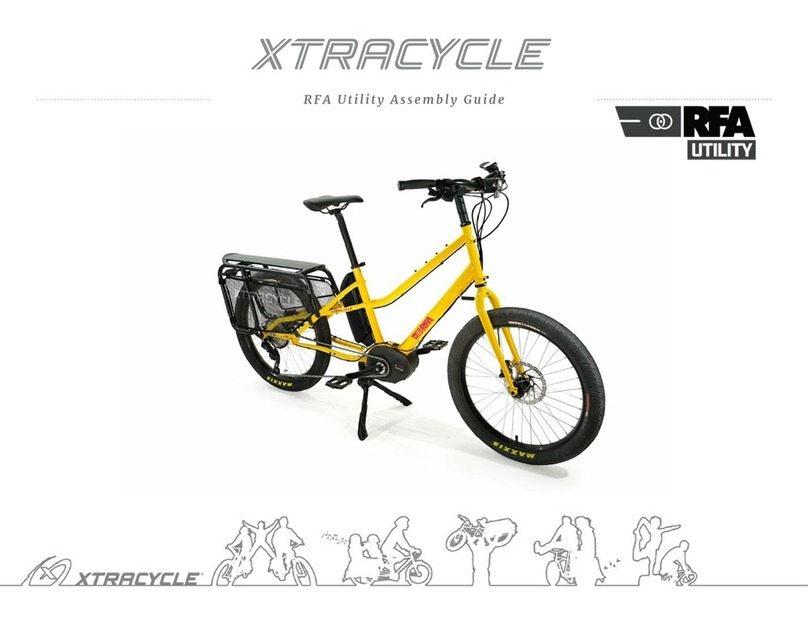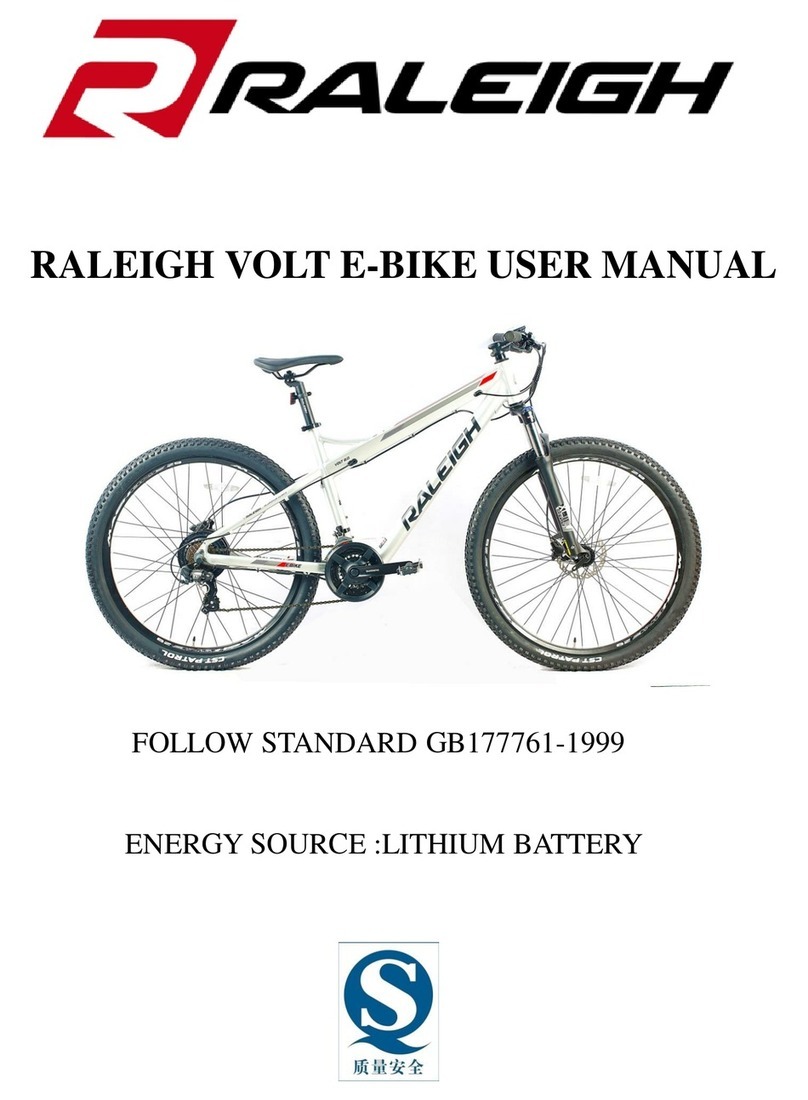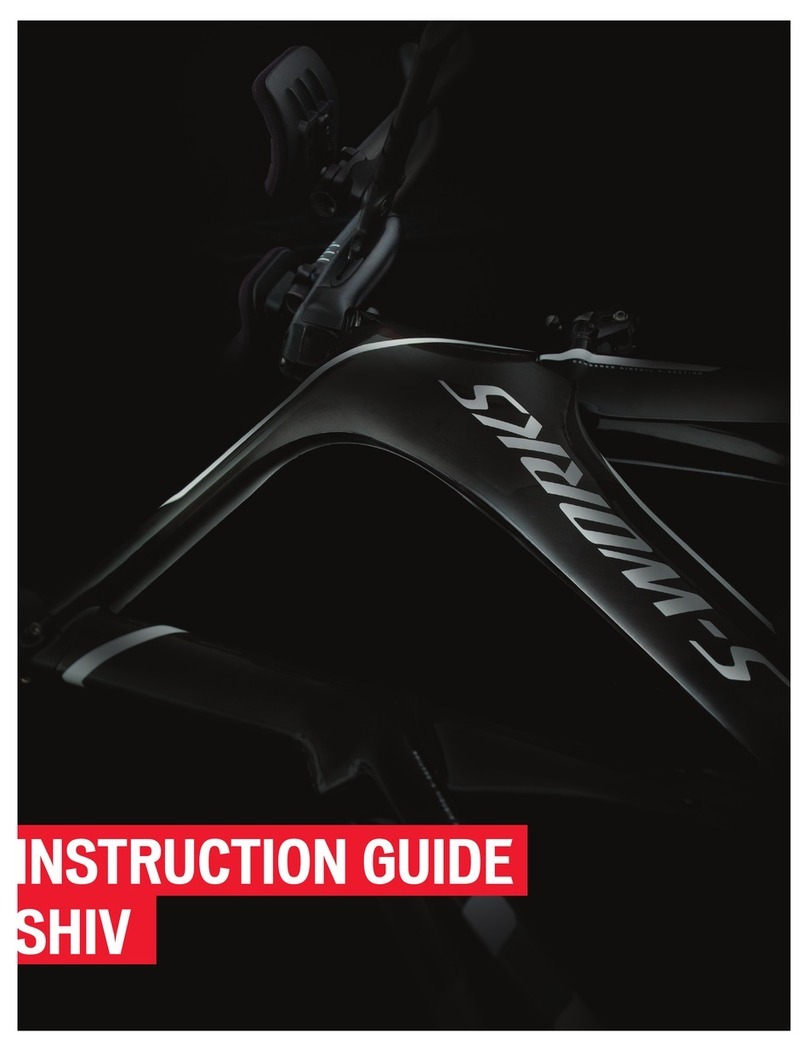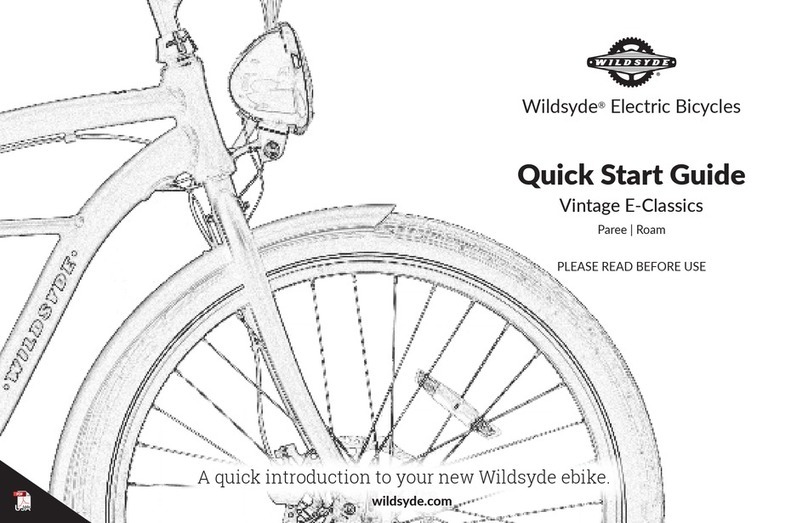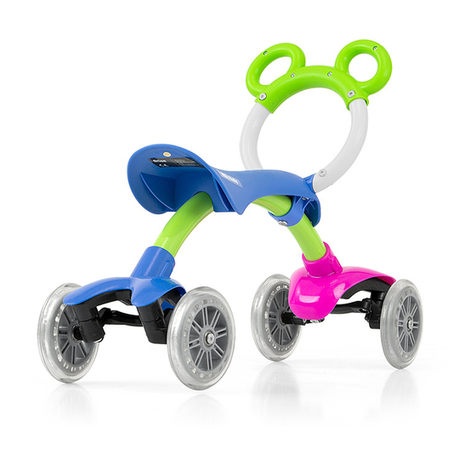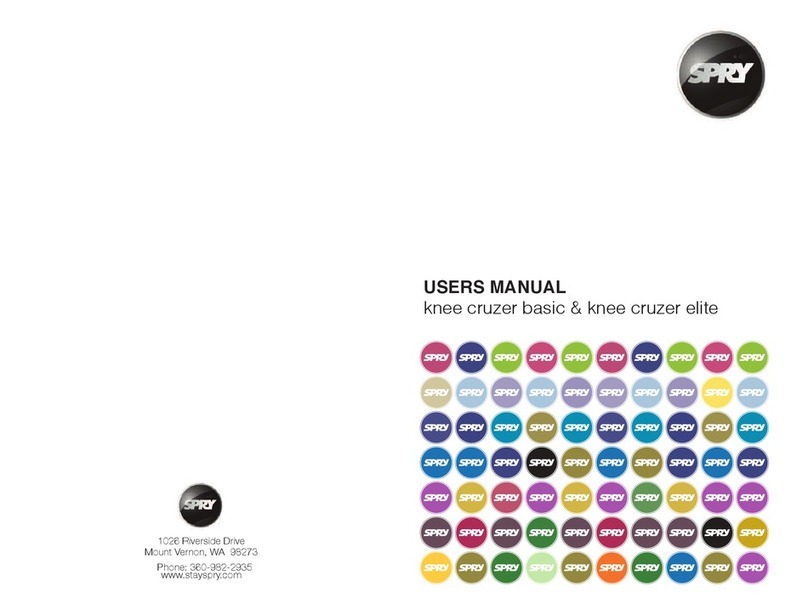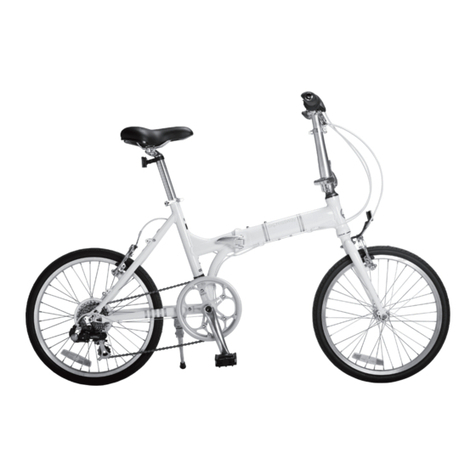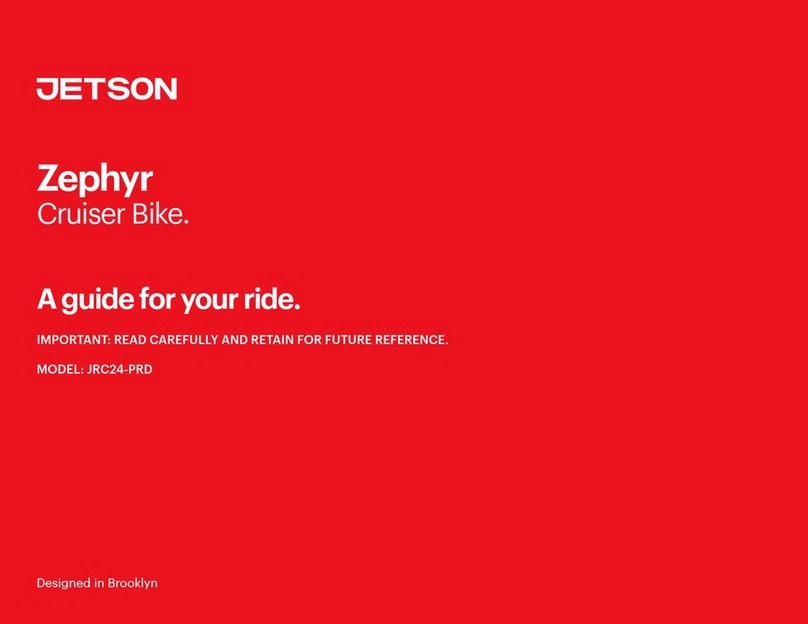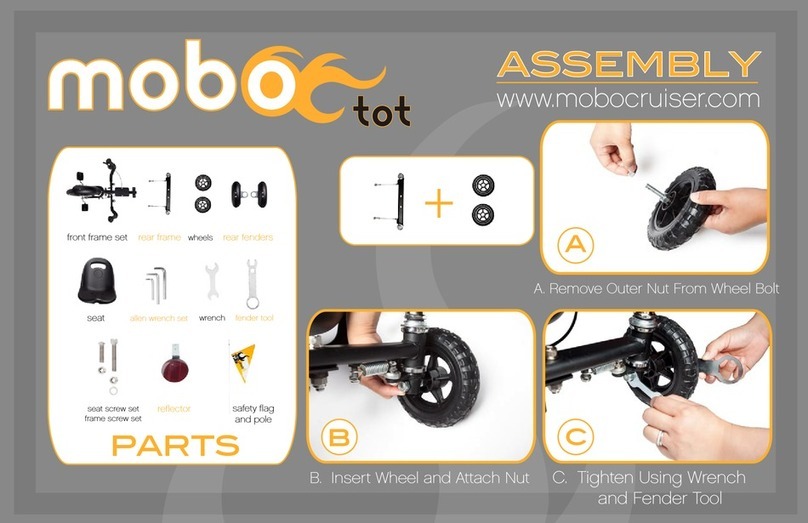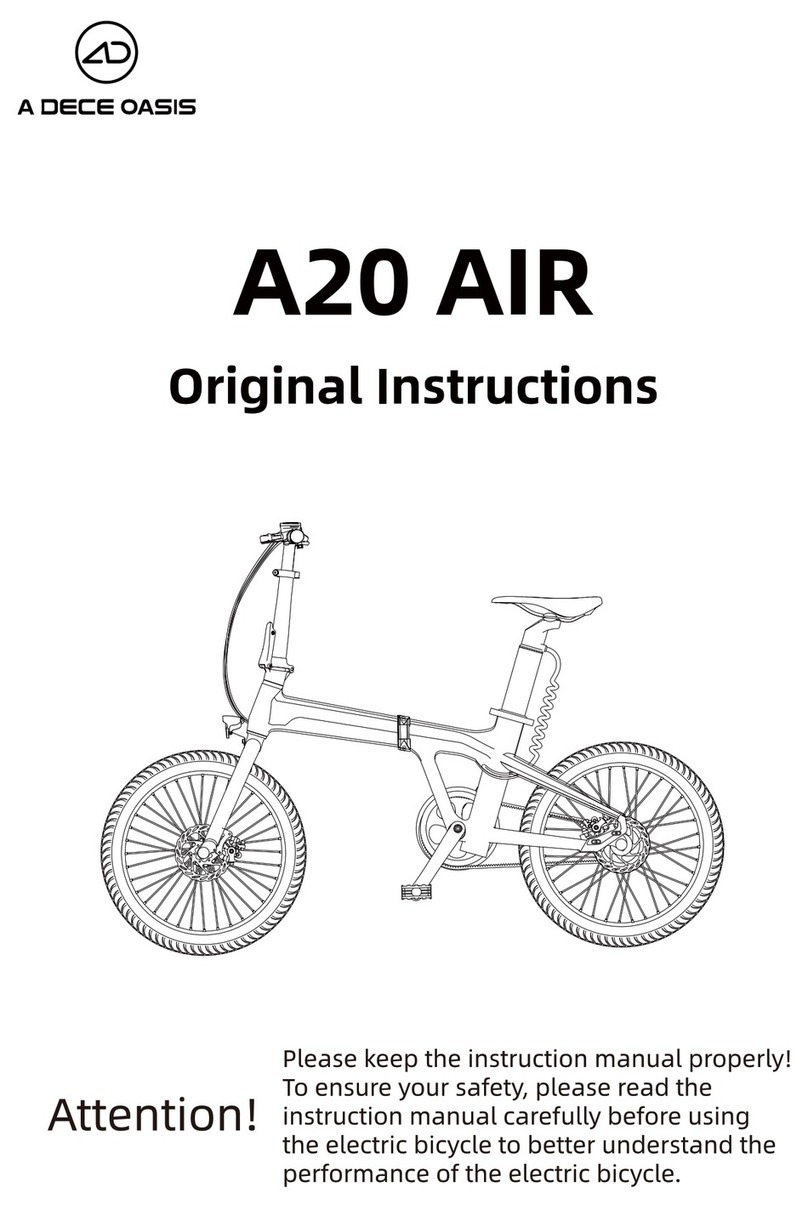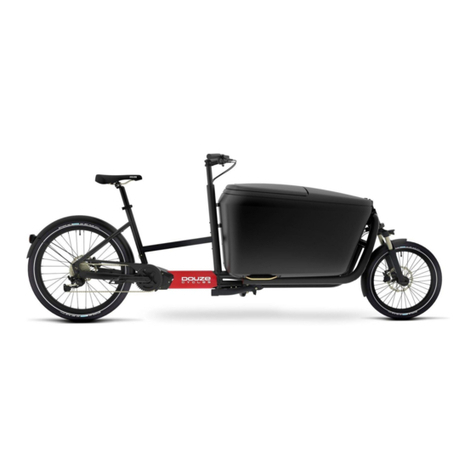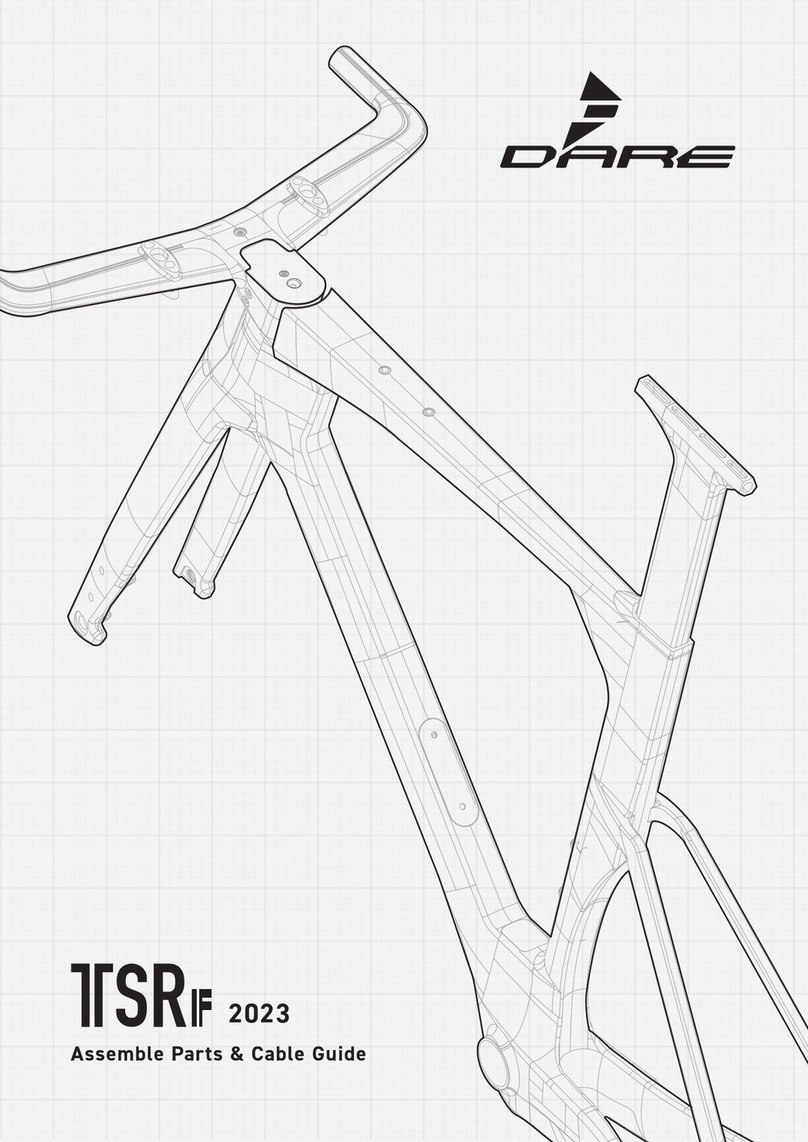FI-FIELDS JETTY User manual

TABLE OF CONTENTS
ii
Jetty Electric Bicycle
Owner’s Manual
THIS MANUAL CONTAINS IMPORTANT SAFETY, PERFORMANCE, AND
MAINTENANCE INFORMATION. READ THE MANUAL BEFORE TAKING YOUR
FIRST RIDE ON YOUR NEW ELECTRIC BICYCLE, AND KEEP THE MANUAL
HANDY FOR FUTURE REFERENCE.

IMPORTANT: KEEP FOR FUTURE REFERENCE
ii
About this Owner’s Manual
It is important for you to
understand your new electric
bicycle (e-bike). Even if you have
ridden an e-bike before, it is
important for every person to read
this manual before riding –you’ll
know how to get better
performance, comfort, and
enjoyment from your new e-bike!
Please take the time to read
this manual while the battery is
being charged. It is the Owner’s
responsibility to carefully read all
of the contents of this manual and
to comply with all laws pertaining
to the operation of bicycles and/or
electric bicycles in your local
jurisdiction.
If the owner is unable to fully
understand this information please
contact Fifield Incorporated
directly for further explanation.
Register your Electric Bicycle
Due to recent federal
legislation an electric bike is no
longer classified as a motor
vehicle. However, various states
have differing laws about riding
them on the road. These
regulations may include but are
not limited to being at least 16
years of age and/or having a valid
drivers’ license. If you have any
questions regarding your states
legislation please consult with the
Laws web page or consult your
local department of motor vehicles
for clarification.
If you have further questions
about the operation of this e-bike,
consult your authorized dealer or
contact Fifield directly. It is
extremely important that you
follow the safety guidelines
contained in this manual in order
to ensure your maximum safety. If
you loan your bike to anyone make
sure they have also read and fully
understand this owner’s manual.
WARNING
Don't dismantle and repair parts
by yourself, please go to the
local distributor or the servicing
station if necessary.
CAUTION
Before riding your e-bike, you will
need to charge your battery fully
before using. Failure to do so
may damage the battery life and
performance.

IMPORTANT: KEEP FOR FUTURE REFERENCE
iii
My bicycle model: _____________________________________________
My frame serial number: _________________________________________
My motor serial number: _________________________________________
My dealer and #: _______________________________________________
Date of purchase: ______________________________________________
Contact Fifield
72 Sharp Street, Hingham, MA 02043
Along with registering online, for your own benefit, please also enter
information about your bicycle below.
Welcome to the Fifield e-Bike family!
Keep for your records

TABLE OF CONTENTS
iv
Before your first ride Pg. 1 - 4
Congratulations!
Know your electric bicycle
Specifications/Accessories
Check before riding
Taking off
Safe riding Pg. 5 - 6
Local riding laws
Safety precautions
Varying riding conditions
Assembly Pg. 7 - 9
Handlebars
Frame
Pedals
Registration
Instructions for Use Pg. 10 - 14
Switching ON/OFF
LCD display screen
Pedal assist
Throttle
Gears
Integrated Bike Lock
Proper battery usage
Charging the battery
Maintenance Pg. 17 - 18
Wheels
Throttle
Rims
Spokes
Tires
Bike frame and handlebars
Brakes
General maintenance
Warranty Pg. 17
Fifield Limited Warranty

BEFORE YOUR FIRST RIDE
1
Congratulations!
You are now the proud owner of a
Fifield Electric Bicycle!
Your electric bicycle is like any
other bike, but with electric pedal
assistance and throttle. The same
precautionary steps while biking
should be taken to prevent any
accidents or injuries.
“Electric” means that your e-
bike will assist you when you are
pedaling if you so choose. You may
also pedal normally with no
assistance at all or twist the
throttle to get moving with no
pedaling necessary.
The electric bicycles’amount
of assistance will depend on what
level you set it to; the speed varies
from 0 to 5. The fastest speed this
bicycle travels is 20 MPH (32 Km/h).
Know your electric bicycle
If misused the features of your
electric bicycle may cause you to
lose control of the e-bike. Before
riding in fast or more difficult
situations, learn the function and
performance of all the mechanisms
of your bike by riding at slower
speeds in a flat, empty space.
The maximum weight is 286lbs
(130 kg). When riding, please pay
attention to the weather and load
on your bike; if any changes are
noticed adjust your riding style
accordingly. When it is raining or
snowing, please increase braking
distance as a safety precaution.
This e-bike is not afraid of rain
or snow, but it cannot be
submerged in water. When water
submerges the motor it can cause
a short circuit to occur and
damage the electric apparatus.
Specifications
The Jetty comes standard with
sleak black (metal) spokeless rims
and aluminum alloy rims to match
the frame.
The 10.4 Ah lithium battery can
propel the bike at speeds up to
20mph using its 250W brushless
rear-drive motor. The range varies
from 25-35 miles, based upon
dependent variables.
Chain driven, the Jetty is also
equiped with shimano Alfine 8-
speed external gearing. This is
paired with Shimano disc brakes
and Kenda reflective tires with
CAUTION
Charge your battery fully before
using.

BEFORE YOUR FIRST RIDE
2
kevlar belt.
All together the bike weighs 48
pounds and folds to near half its
size.
Accessories
The jetty comes with a headlight
and tailight that can both be
operated through the LCD control
screen (page 10).
Also, a foldable kickstand and
rear cargo rack.
A USB charging outlet can also
be found under theblack rubber
cover next to the charging port
(page 13).
A bell can also be found on the
left handle bar infront of the
throttle.
A built in bike lock can also be
found on the rear wheel beneath
the seat stem.

3

BEFORE YOUR FIRST RIDE
4
Check your e-bike before riding
everytime
Before operating your electric
bicycle, inspect it carefully to avoid
accidents or damage. Inspect your
bike completely before each ride.
Turning the power on and then
accidentally twisting the throttle
can result in the e-bike lurching
forward and may cause an
accident, damage, or injury.
If the battery was removed,
place the battery back into its
location and be sure to lock it and
remove key. Check to see that the
battery is fully charged (battery
level indicated on screen) before
riding and check the air pressure of
the tires (45 –50 psi). Be sure to
test the front and back brakes, as
well as the condition of the
handlebars and the front and back
wheels.
Make sure that everything is
fastened and secure. Be sure to
check that all quick releases are
locked and in good working order.
Taking off
As the bike starts, accelerate
slowly; do not try to get to your
maximum speed right away
because doing so could damage
the electric components.
If applied, the hand brake will
automatically cut the power to the
motor as well as release the
throttle. You should avoid using
the throttle while brakes are
being applied so that you do not
overload the motor. When starting
from an elevated path, pedal as
much as possible so that the
electric power will last longer.
Pedaling more than using solely
the throttle will lenghten the life of
the battery and motor.
Going downhill
When going downhill, please
do not turn the power off. If you
are not pedaling or using the
throttle, there will be no power
assist when traveling downhill. If
CAUTION
Always keep the power switched
OFF before riding. Turn on only
after you are ready to ride.
WARNING
Do not leave the key in the
battery lock while riding to avoid
breaking the key.

BEFORE YOUR FIRST RIDE
5
you turn the power off, it could
easily damage the controller and
motor.

BEFORE YOUR FIRST RIDE
6
As you continue to ride, the
battery will decrease
porportionally based on the
amount of power you are using. As
the battery decreases, the bar will
go down one by one. If the bar
goes out completely, you can still
pedal your e-bike just like a regular
bike. Be sure to charge your
battery when you get to an
electrical outlet.
To get the best distance out of
your electric bike, refrain from
excessive stop and go braking and
coast as much as possible.

SAFE RIDING
7
Local riding laws
Most state and local areas
have specific laws for cyclists.
Please check with your local
Department of Motor Vehicles for
clarification. Again, these e-bikes
are not considered motor vehicles,
but may be subject to additional
regulation based on the state you
live in. Some of the common laws
include mandatory lights and
reflectors on the bikes.
Safety precautions
Be sure to ride an appropriate
distance away from cars,
pedestrians, and other obstacles.
In addition, try to avoid potholes,
drain grates, and other
imperfections in the road which
may affect your ability to ride. A
bell is provided to alert others of
your approach.
OBEY all traffic laws relevant to
the operation of bicycles and
electric bicycles.
KEEP both hands on the
handlebars at all times and do not
hang objects from the handlebars.
RIDE predictably and in a straight
line. Never ride against traffic.
USE the correct hand signals when
turning or stopping. If you do not
know the proper hand signals, it is
important you learn them before
riding on the road.
USE extreme caution when you are
near other vehicles. Ride
defensively and assume that other
people on the road do not see you,
and be careful at intersections
when starting from a stopped
position.
DO NOT suddenly brake in the rain
or on slippery surfaces.
WEAR a helmet for your protection
and bright or reflective clothing to
make you more visible.
DO NOT wear lose clothing
because it can get caught in the
bicycle.
When going over train tracks, be
sure to ride perpendicular to the
tracks or walk your bicycle across.

SAFE RIDING
8
Varying riding conditions
Wet conditions
Like any other moving object,
when it is wet or snowing, there is
less traction. This applies
specifically to the brakes on the
bike; they will not perform as well
as they do in dry climates. Be sure
to brake earlier because it will take
a longer distance to come to a full
stop. Ride at a slower speed and
try to be more visible.
Low visibility
Even though your bicycle
comes with headlights, rear lights,
and reflectors, in situations where
there is low lighting it may make it
difficult for people to see you. Be
sure to see and be seen in your
environment. Wear reflective and
bright colored clothing to enhance
visibility for others.

ASSEMBLY
9
1. Handlebars: When your e-bike is first shipped the handlebars be
properly attached, but in the folded position. This can be seen in the
left side image. There are two steps to resolve this. First, simply
straighten the handlebar frame until it is perpendicular to the
ground. When this is complete, use the metal clasp on the side of the
frame to lock the collapsible joint in place. If done properly, there
should be no movement of the handlebars.
Next, use the depicted tool below to loosen the 2 screws on the
handlebar clamp just enough for you to roll the handlebars toward
the seat until they are in the correct position (shifters facing you at
the fight level and the LCD facing up toward your face). Make sure to
then tighten down the screws.

ASSEMBLY
10
2. Frame: In addition to the handlebars being out of place, the middle of
the bike will also be in the collapsed. To correct this, simply unfold
the bike until the frame is perfectly straight and use the metal clasp
on the frame to lock the joint together. Once closed make sure to
push in the black lock found above the clasp (shown in the image on
the right. There should be no movement at the collapse point if done
properly.
3. Pedals: The pedals will come in their own wrapping. Once unwrapped
look inside the threaded section to determine what side of the bike
the pedal goes on (depicted below). Attach the pedals by putting a
washer on the threaded part o the pedal and using the provided
wrench to tighten the pedals in their place. The pedals are also
collapsible for ease of storage. To do this, simply push the pedal
inwards and fold it either up or down. This is best done using your
foot.

ASSEMBLY
11
4. Registration: When assembly is complete, please refer to our website
(www.fifieldebikes.com) to register your new electric bicycle! On the
site, you will be prompted to answer a few brief questions and
provide two serial numbers. The first, the frame serial number is
located directly below the handlebars and above the front wheel on
the front of the bike. The second, the motor serial number is written
on the motor which is located in the center of the rear wheel.

INSTRUCTIONS FOR USE
12
Switching ON/OFF
The LCD has three buttons.
MODE UP DOWN
To power on the bike, remove the black rubber cover found on the
left side of the main frame of the bike, and turn on the red power switch.
From here , go to the LCD screen and hold down the MODE button for 2
seconds. To turn off, hold MODE for an additional 2 seconds. Be sure to
turn the bike off when not in use to preserve battery life (both the LCD
screen and the main power switch).
When the e-bike is parked for more than 10 minutes, the display will
automatically shut down. Refrain from turning off the system while
riding.
LCD display screen
The display screen will only work when the battery is attached to the
bike.

INSTRUCTIONS FOR USE
13
Integrated Bike Lock
To use the bike lock you first have to be sure the lock is not lined up with
any spokes on the wheel. To engage the lock, simply turn the key so it is
in the vertical position depicted below on the left. Holding the key in this
position you then pull the slider, on the opposite side, down until there is
a click. Then release the key followed by the slider and the bike will be
locked. To unlock, simply insert the key and turn it to the vertical position
again and the lock will release on its own.
In the above image on the right the lock is in the closed position, seen by
the silver bolt that loops through the rims and into the other side.

INSTRUCTIONS FOR USE
14
LCD Function Summary
The LCD screen provides a wide
range of functions and indicators
to the fit your needs. The indicated
contents are as follows:
Battery level indicator
Speed display
Trip distance and total distance
Cruise control (when walking)
Headlight on/off
Motor power (wattage)
Trip distance and total distance
Display Interface
After starting up the display,
the default setting will show
running speed. Press MODE to
change the information from
Running Speed to Average Speed,
Max Speed, Trip Distance, Total
Distance, and Trip Time.
Push Cruise Control
Press and hold DOWN to enable
power assist while walking the
bicycle. Your bike will go at a speed
of 3.7 MPH (6 KMPH).
NOTE: This function can only be
used while pushing/walking the
electric bike by hand. Please do not
use this function while riding.
Backlight On/Off
Hold UP for 2 seconds to
turn on the backlight of the
display; this will also power on the
headlight. Hold UP again for 2
seconds to turn off.
Power Assist Level Selection
Press UP or DOWN to
change desired output of power.
The power ranges from 0-5. Level 0
will supply no power to the pedal
assist and level 5 will supply the
maximum. The default value is
level 1 though you will be able to
shift freely at any time. Your
current level of power assist can
be seen in the bottom left corner
of the LCD screen labeled as
“PAS.”
CAUTION
Try to avoid hitting the screen.
Do not try to modify the system
parameters as it may cause
malfunctions.
WARNING
Contact service center if an error
code is displayed. Do not attempt
to fix it yourself.

INSTRUCTIONS FOR USE
15
Battery Indicator
The five battery bars represent
the capacity of the battery. When
the battery is low the battery
frame on screen will flash to notify
that it needs to be recharged
immediately.
Error Code Information
If an error code appears, take
note of what code is displayed.
Contact a service center to get
your bicycle repaired. An error
code will be displayed in the
bottom right corner in place of the
normal “WATT” display.
For more information on the LCD
screen, refer to our website to
download the extended version of
the manual.
Pedal assistance
Your pedal assist will start
once you start to pedal and stop
once you stop peddling. You are
able to adjust the amount of
assistance on the LCD screen by
adjusting the + / - button. If you do
not want any assist, bring your
bike to a stop and power off the
system. If the handbrakes are
applied, the pedal assist will cut
automatically. You do not need to
turn the power off when going
downhill.
Throttle
The throttle is located on the
left side of your handlebars. It is a
one speed throttle which does not
engage unless the bike is pedaled
to engage the motor, and then the
throttle can be used and pedaling
can stop. To engage the throttle,
turn the throttle towards you
while seated on the bike. There is
an automatic SHUT OFF of the
throttle on the brake levers. Every
time the brake lever is pressed, the
power from the motor is
disconnected.
Gears
There are 7 external gears on
your bicycle. The gears are located
on the right side of your
handlebars. In order to shift
between gears, simply move the
shifter up and down until you find
a suitable gear to ride in.
Battery
The battery supplied is the top
quality 10.4 amp Lithium Battery
and was designed specifically for
this electric bicycle. The battery is
sealed safely within the frame of

INSTRUCTIONS FOR USE
16
the bike to ensure no damage can
come to it.
Your battery should be
recharged after each use. The
normal lifecycle of the battery, if
continuously discharged and
recharged, is about 3-5 years or
800-2000 recharges, after which
the storage capacity will decline.
Again, be sure to fully charge the
battery before the first use.
The range in distance on a full
charge is approximately 25 –35
miles depending on your weight
class and terrain. Higher weight
classes and uneven surfaces will
require more power than lighter
weights and flatter surfaces. This
equals to 5 –6 hours of continuous
riding, again depending on your
weight class and terrain.
Battery performance is
affected by temperature, and will
perform better in warmer
temperatures. When the
temperature is below 32°F (0°C),
the battery current may decrease
by 1/3. Consequently, the travel
range in cold environments is less
than in warmer environments, but
will return to normal when it the
battery returns to room
temperature.
Frequent braking/starting,
riding uphill/against strong winds,
starting from a standstill, or riding
on rough/muddy roads will use
extra power and lower range.
Here a few tips to prolong the
battery life under these conditions:
Frequent braking/starting –try
to look ahead and coast rather
than stop and go frequently.
Riding uphill/against strong
winds –pedal to supplement the
battery power.
Starting from a standstill –use
pedals to help bring you up to
speed, not just the throttle.
When battery meter indicates
low power remaining, switch to
manual power and avoid using
the battery.
If the bicycle is being stored,
remove the battery and recharge
it every month.
WARNING
Do not attempt to access the
Lithium battery in any way. Doing
so may cause chemical, electric,
and/or fire hazards.
Table of contents

